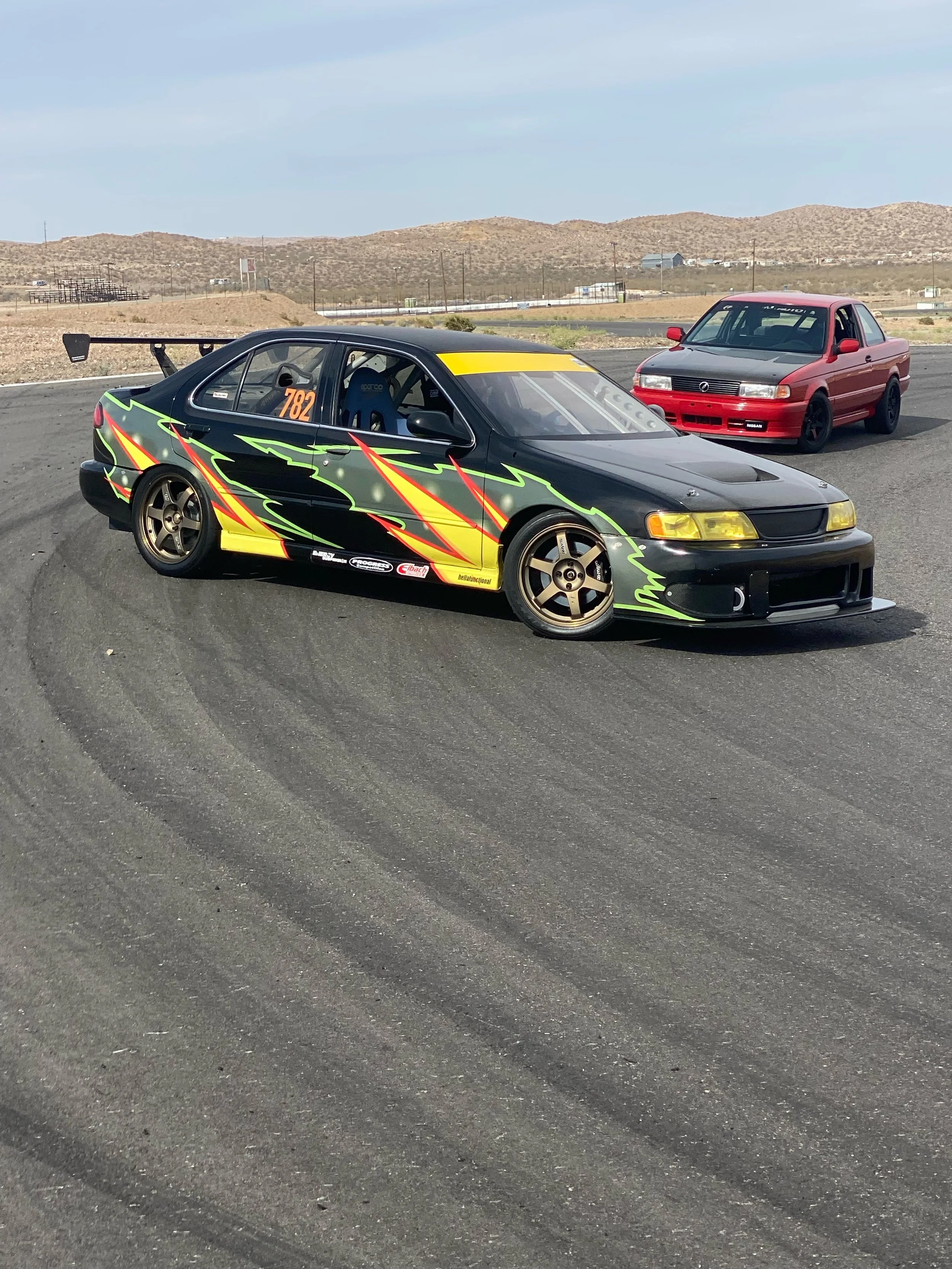Walter’s Sentra: Lifetime Obsession
A lifelong Nissan fan and a crew member for an old NASA team running an SE-R, Walter seemed destined to pick up this particular Sentra. His family had brought him up on Zs and Maximas, so when Walter turned 16, he bought his first car, a 1991 Sentra.
That sowed the seed for the next several years. Inspired by Need for Speed, he started tuning his Sentra and soon became a knowledgeable voice in the community as well as an in-demand mechanic. His reputation opened the door to crewing positions for several big teams running in NASA’s SE-R Cup series back in the early 2000s — some of which even ran in the 25 Hours of Thunderhill.
In 2003, Walter stepped away from cars to focus on family. That break lasted for fifteen years. After that long interim, he picked up an E46 M3 and started driving himself. As good as the BMW was on the track, the love for the old Sentra, now mixed with his recent racing experiences, led him to consider building a special Sentra for racing. However, he couldn’t spare the time he once could, and so he hoped something half or wholly-built would pop up in the classifieds.
When an old friend reached out to Walter with news of a special car for sale, he felt like his stars had aligned. Not only was this particular Sentra built by MotoIQ’s Mike Kojima, but it had been the brother of a car Walter was familiar with — one which had been raced in SE-R Cup back in the day.
That particular car from his crewing days was named “Dog I.” This was “Dog II,” the sister car. The two had been given their monikers from their Petco sponsorship; they had pawprints plastered all over them during their racing days. The latter wasn’t used much in Spec SE-R, but it had seen some action in the Pacific Tuner Championship ten years ago. Since then, it’d been stored and taken out for the annual track outing. The price was right, the build quality was obvious, and the decision was easy. Walter drove his truck and trailer down to LA that weekend and began a new relationship that joined his past with his future.
Like its sibling, Dog II is built upon a body-in-white build with all the right parts. The motor, a 2.1-liter SR20VE with 11:1 compression, produces 200 horsepower and 170 lb-ft of torque on a 50-50 blend of 91 and 100 octane fuel. It’s a peaky motor, but with only 2,600 pounds to push along, it makes do.
An oversized Koyo rad is part of the beefy cooling system that helped Kojima run the car comfortably in desert heat.
Handling comes courtesy of a square set of 235/40R17 NT01s wrapping Volk TE37 wheels and an intricate cage connecting all four shock towers. Ground Control coilovers, plenty of front camber, and a bump steer kit help the car follow every minor steering input. The final touch, a little bit of rear axle bending to toe the rears out slightly, contributes to the Sentra’s immediate turn-in — the kind that is vital in a front-drive sedan. “Super oversteery” were the words Walter chose to describe its balance.
The car was just about perfect. Aside from updating the safety equipment, Walter felt it needed nothing. That was until he drove it on track for the first time and struggled with the peakiness of the motor. Despite the SR20VE’s variable valve lift, it isn’t quite as tractable as he wanted. So when picking out a new Nismo LSD, he specified a 4.75 final drive to keep the engine in its sweet spot more of the time. And like that, he was done with modifying it.
The problem with a car like this, even a relatively simple car that’s nearly completed, is that it requires a trained race shop to maintain it. He leaves it to Tarek at All Automotive in Mountain View. “They have the suspension geometry expertise and motorsports experience needed to direct the continuing development of the vehicle as well as continue the maintenance needed after every season,” Walter adds.
Now that the Sentra’s up to date and running reliably, he hopes to put in as many track days as he can. It hardly uses its brakes; the Wilwood four-pistons and 11.75” rotors are understressed. For how fast it is, it’s remarkably easy on consumables. It’s still on the same set of tires the car came with, too.
He played a supporting role for many years, but once the ball was rolling and he was able to sit himself in the seat, things have gotten steadily better. His racing education helped him make the right decision when it came to buying a purpose-built car — one which has given him the opportunity to put in his 10,000 laps without having to regularly wrench on the car. The fact that he’s finally getting to hone his driving skills on track in such relaxed fashion is sweet, but it’s not quite as sweet as being able to simultaneously revisit his tuning heyday and witness his racing future expand.




